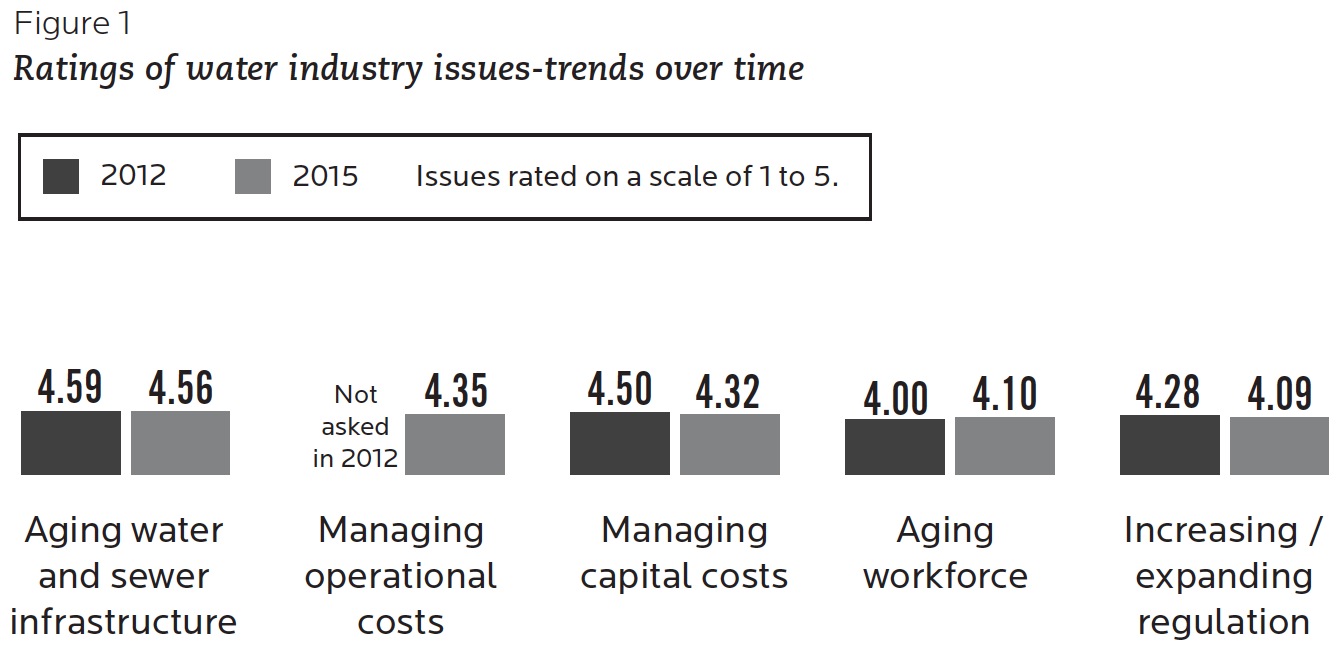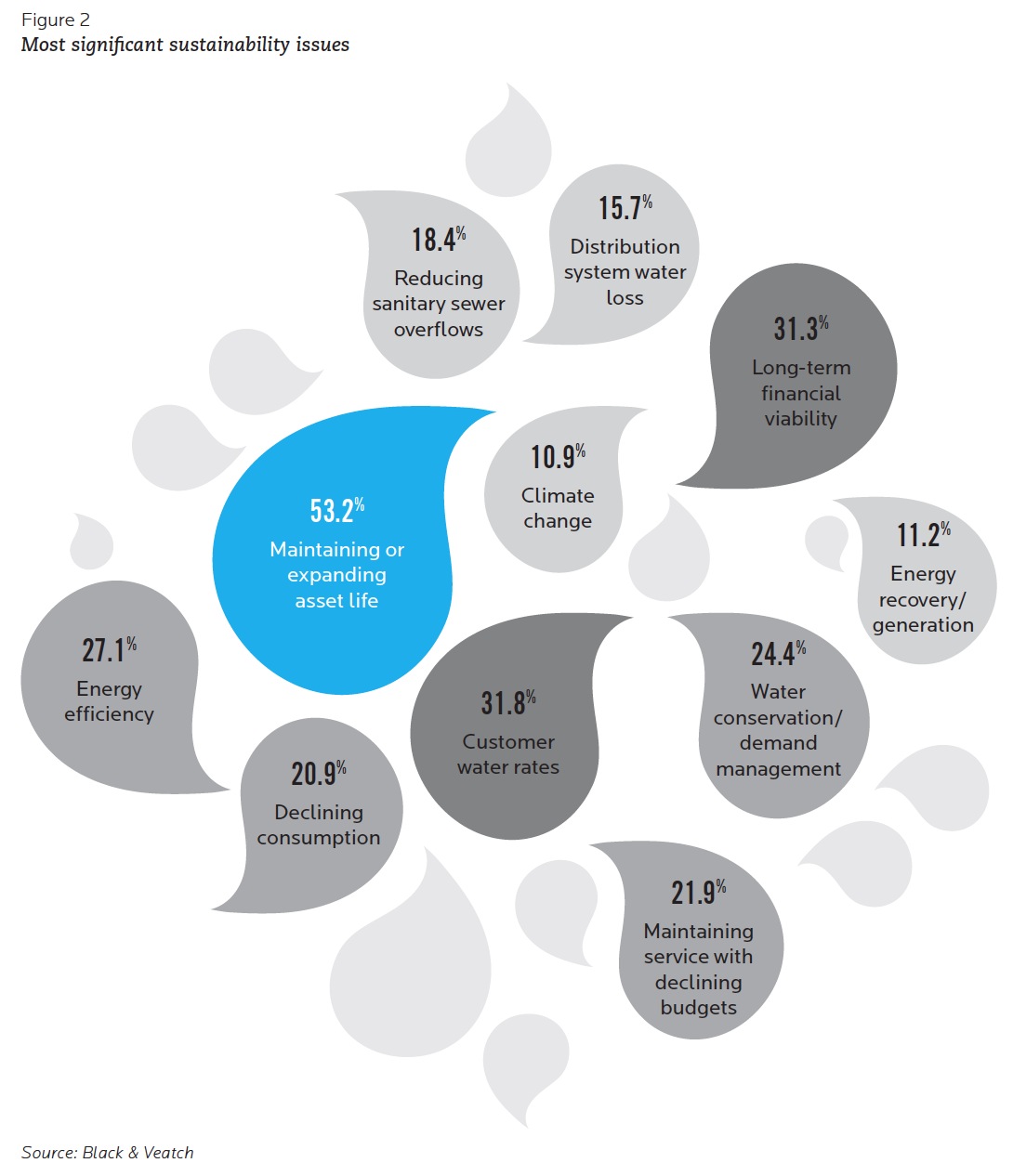BLACK & VEATCH INSIGHTS GROUP
U.S. water service providers are uniquely accustomed to changing conditions. But rarely have so many competing pressures tested the industry as they do in 2015. Strained capital budgets, aging equipment and distribution systems, social pressures around sustainability and water scarcity are further impacting a sector that is already in the midst of a decade-long business model transformation. These pressures are also rewriting the rules for utilities that have been forced to prioritize “need to have” infrastructure investments at the expense of investments in their future.
The 2015 Black & Veatch Strategic Directions: U.S. Water Industry report frames the discussion by looking at financial, strategic, infrastructure and technological resilience in water utilities. It also contains perspectives from Asia and the UK where resilience is central to the planning cycle, albeit with varying degrees of success. The issues addressed within this report are complex and overlapping. Mitigating them will require deep assessment, integrated solutions and resolve.
Achieving resilience – fiscal soundness, a diverse array of assets and the flexibility to respond and recover from system shocks and stresses — is at the top of the to-do list. The last two iterations of Black & Veatch’s Strategic Directions: U.S. Water Industry report reflected increasing urgency around these issues. However, this year’s report defines in stark terms the gaps that expose many U.S. utilities and what it means to be prepared for both anticipated and unexpected change. It examines what it means for water industry service providers to be resilient, connecting different elements that constitute readiness.
Survey data encouragingly suggest that some utilities, after years of immobility created by limited capital, are moving toward resilience. Many others, however, are not.
Key Issues In 2015
When it comes to resilience, aging infrastructure continues to be a perennial concern for water utilities. It has ranked first among the top five water industry issues for the past four years (Figure 1). Managing operational costs, managing capital costs, and increasing/expanding regulation are also included among the top five water industry issues over this period. The consistent increase in concern over aging workforces should also be noted. The Strategic Resilience section of the report addresses how water utilities are incorporating asset management into resilience planning. It also discusses the impact of smart water and smart city programs, which often leverage data analytics to inform decision-making.
Externally, scientists have been discussing the specter of climate change for more than a quarter century; analysts have addressed the industry’s financial woes; and consumers and regulators have become more vocal about the importance of sustainable business practices. Yet development in water scarce regions, both residential and industrial, continues. So why act now? Motivating factors include immediate issues such as the drought in the southwestern United States; water main breaks and flooding in the east; emerging efficiency technologies; and decreasing revenue across the industry.
As organizations, water industry service providers know the looming operational and management challenges. Headlines focusing on drought, burst mains in winter and issues with waste management experienced by some utilities are hard to ignore. In fact, one could argue that the supply and sustainability challenges facing many utilities and communities are not caused by a lack of information, but by the lack of money to meet these challenges head-on.
Download full version (PDF): U.S. Water Industry Report
About Black & Veatch
www.bv.com
Black & Veatch is an employee-owned, global leader in building critical human infrastructure in Energy, Water, Telecommunications and Government Services. Since 1915, we have helped our clients improve the lives of people in over 100 countries through consulting, engineering, construction, operations and program management.








 RSS Feed
RSS Feed